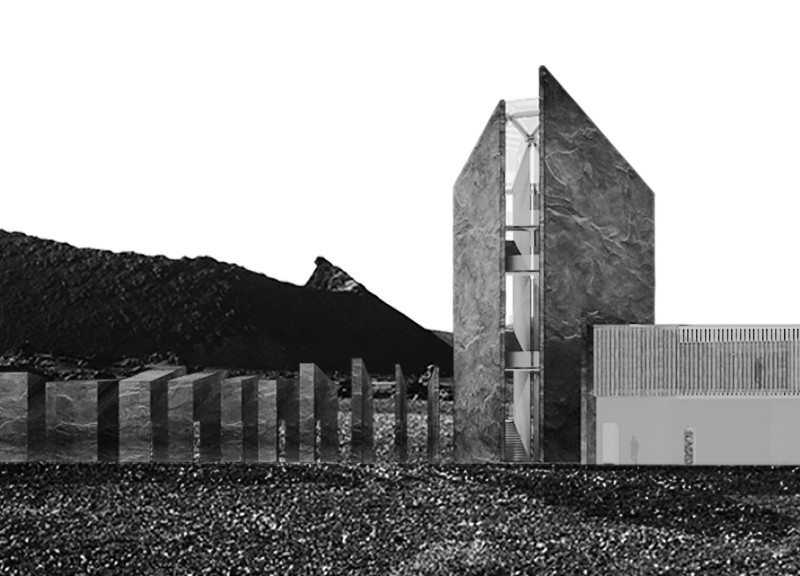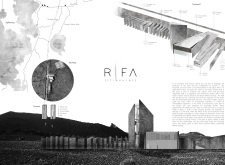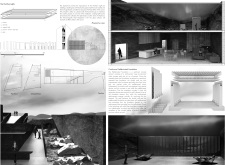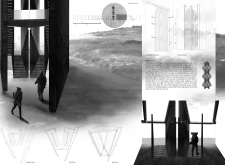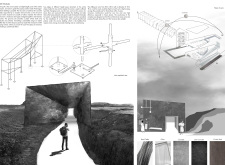5 key facts about this project
Unique Geological Design Approach
RIFA's design is intimately connected to the geological context of its location. The project draws inspiration from the natural fissures found in the surrounding environment, directly influencing both the architecture's form and layout. This connection to the site encourages an interaction between the building and its natural surroundings, creating an immersive experience for visitors. The observation tower serves as a prominent feature, offering panoramic views of Gyrðinga Bay and Kievrag Cave. Its design enhances not only the visual connection to the landscape but also reinforces the educational component by informing visitors about the area's geological significance.
Material Selection and Sustainability
The choice of materials in RIFA is strategic, underscoring a commitment to durability and environmental harmony. Reinforced concrete provides structural integrity, while Corten steel cladding enhances the building's aesthetic through its weathered appearance, which resonates with the rocky terrain. The use of glass allows for natural light, promoting an inviting atmosphere, while double-glazing techniques contribute to energy efficiency. The project also incorporates sustainable design practices, including geothermal heating and passive solar strategies, which minimize its ecological footprint. Pathways and facilities have been designed with accessibility in mind, ensuring a welcoming environment for all visitors.
Explore the RIFA project further to gain insights into its architectural plans, sections, designs, and innovative ideas. The presentation offers a comprehensive view of how this project integrates with its environment while serving its functional objectives.


